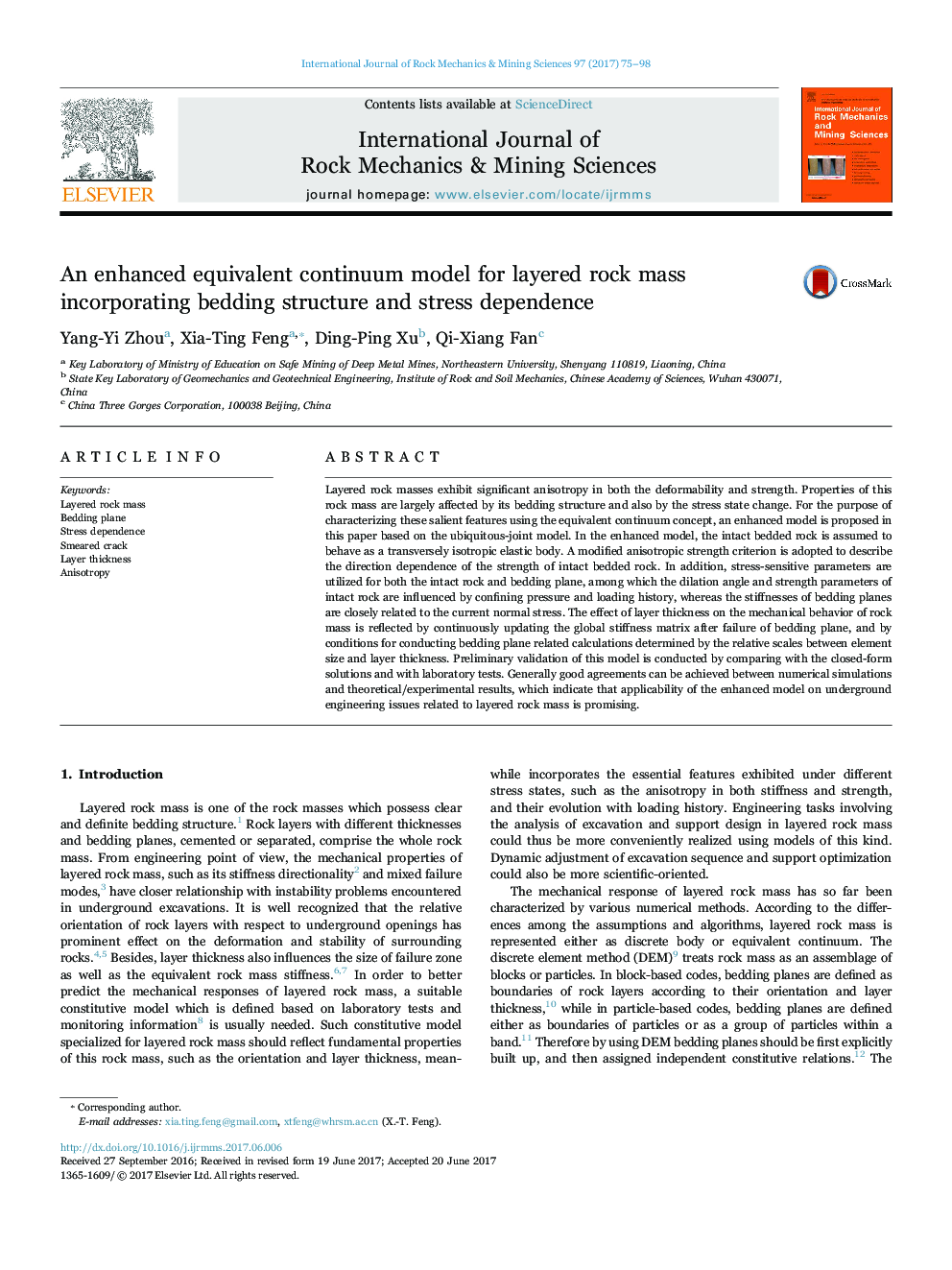| Article ID | Journal | Published Year | Pages | File Type |
|---|---|---|---|---|
| 5020169 | International Journal of Rock Mechanics and Mining Sciences | 2017 | 24 Pages |
Abstract
Layered rock masses exhibit significant anisotropy in both the deformability and strength. Properties of this rock mass are largely affected by its bedding structure and also by the stress state change. For the purpose of characterizing these salient features using the equivalent continuum concept, an enhanced model is proposed in this paper based on the ubiquitous-joint model. In the enhanced model, the intact bedded rock is assumed to behave as a transversely isotropic elastic body. A modified anisotropic strength criterion is adopted to describe the direction dependence of the strength of intact bedded rock. In addition, stress-sensitive parameters are utilized for both the intact rock and bedding plane, among which the dilation angle and strength parameters of intact rock are influenced by confining pressure and loading history, whereas the stiffnesses of bedding planes are closely related to the current normal stress. The effect of layer thickness on the mechanical behavior of rock mass is reflected by continuously updating the global stiffness matrix after failure of bedding plane, and by conditions for conducting bedding plane related calculations determined by the relative scales between element size and layer thickness. Preliminary validation of this model is conducted by comparing with the closed-form solutions and with laboratory tests. Generally good agreements can be achieved between numerical simulations and theoretical/experimental results, which indicate that applicability of the enhanced model on underground engineering issues related to layered rock mass is promising.
Related Topics
Physical Sciences and Engineering
Earth and Planetary Sciences
Geotechnical Engineering and Engineering Geology
Authors
Yang-Yi Zhou, Xia-Ting Feng, Ding-Ping Xu, Qi-Xiang Fan,
